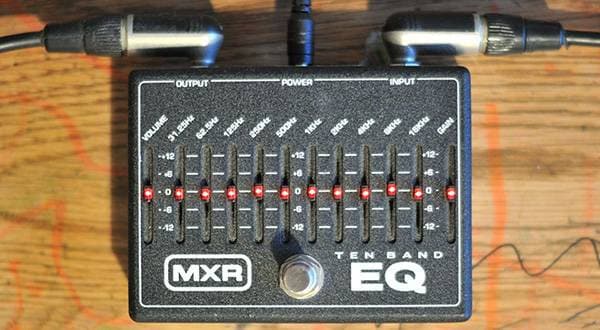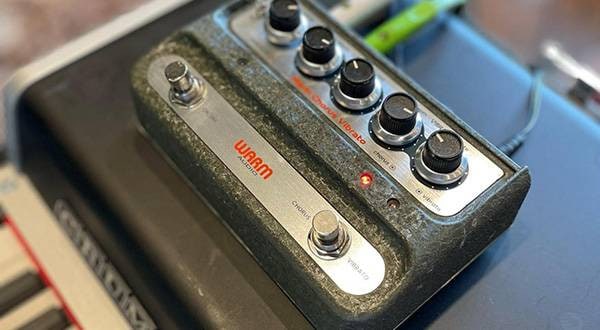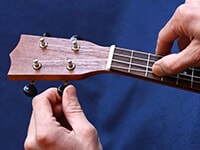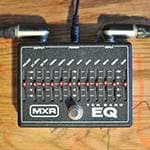Hello, this is Conservario.
You've now learned some basic strumming patterns and have a general grasp of arpeggios. At this level, you can start challenging yourself with a variety of songs—not just those suited for singing and playing but also solo ukulele pieces.
However, as the title suggests, many players struggle with switching between chord playing and single-note playing.
In this article, I'll introduce some tips and exercises to help you overcome this hurdle. Be sure to read until the end!
■ Switching from Chord Playing to Single-Note Playing
Chord playing involves strumming multiple strings at once, while single-note playing requires plucking one string at a time using your thumb, index, or middle finger.
Once you try it, you'll notice that the right-hand movements for these techniques are quite different. If you can't fully control your right hand, you might end up strumming only 2–3 strings when playing chords, or accidentally hitting extra strings when playing single notes.
Jumping straight into song practice is an option, but if your right-hand control is unstable, you may struggle to play smoothly no matter how much you practice.
That's why I recommend foundational exercises to help you switch between chord playing and single-note playing more effectively.
For this exercise, let's hold down a G chord with the left hand:
Index finger on the 2nd fret of the 3rd string
Ring finger on the 3rd fret of the 2nd string
Middle finger on the 2nd fret of the 1st string
Keep your left hand fixed in this G chord position.
Trying to switch chords while working on right-hand technique can be overwhelming. I understand the desire to master everything at once, but rushing this process can lead to messy playing habits.
Once you have your left-hand chord in place, let's focus on the right-hand movement.
First, start with chord strumming—strum all the strings at once.
Begin by using your thumb, and once you're comfortable, you can also try using your index finger.
Next, move on to single-note picking—pluck the 4th string.
The key difference between chord strumming and single-note picking is the number of strings played. Since single-note picking only involves one string, the volume will naturally be lower. However, many players tend to play even more softly than necessary because they're afraid of hitting the wrong string.
Play the single note with the same confidence and intensity as chord strumming.
After the single-note picking, go back to chord strumming.
Then, after the chord strumming, pick the 3rd string as a single note.
…Are you starting to see the pattern?
This exercise involves alternating between chord strumming and single-note picking, changing the string for the single-note picking each time.
In tablature, it looks like this:

There are many tips, but to start, make sure to watch your right hand carefully while playing.
Since the chord remains the same, there’s no need to look at your left hand.
If you're struggling with the G chord and some strings aren’t ringing clearly, don’t worry about it—still, don’t look at your left hand.
This exercise is mainly for training your right hand, so to put it bluntly, the left hand doesn’t really matter right now.
When practicing, always be aware of what specific skill you are working on.
Randomly switching your focus between your right and left hand will make your practice less effective.
For chord strumming, aim to clearly play all four strings, and for single-note picking, focus on playing just one string cleanly.
Once you can smoothly switch between chord strumming and single-note picking using your thumb, practice doing the same with your index finger.
After that, as a final step, try strumming with your index finger and picking single notes with your thumb.
This "index finger for chord strumming, thumb for single-note picking" technique is actually a common approach in solo ukulele playing.
The index finger produces a light, shimmering sound for chords, while the thumb makes the melody stand out. This creates the most balanced and musical sound.
It's a useful technique not only for solo ukulele but also for singing while playing, so be sure to master it!
■ Summary
In this guide, we explored right-hand switching techniques for transitioning between chord strumming and single-note picking.
As someone who plays both ukulele and guitar, I understand how challenging this switch can be. While guitarists often use a pick, ukulele players must rely solely on their fingers, making the transition even trickier.
In fact, I personally find the ukulele to be even more difficult than the guitar in this regard.
However, greater difficulty also means greater reward—mastering this technique opens up more musical possibilities.
The true masters of the ukulele execute these transitions effortlessly and naturally. They make it look so easy that, as a beginner, I once thought, "I can do that too!"—only to completely fail when I actually tried. Haha!
To all beginners: there’s no need to rush.
The exercises I introduced today might feel difficult and slow at first. That’s completely normal.
Just keep practicing at your own pace. Over time, you'll find yourself improving without even realizing it—both in accuracy and speed.
Eventually, you'll be able to switch seamlessly without even looking at your right hand.
Once you reach that point, try adding chord changes to your practice or challenge yourself with songs that incorporate these transitions.
Before you know it, you'll be completely hooked on the joy of playing the ukulele!
Thank you for reading until the end.
→ SOUND HOUSE Ukulele Collection
The “sound & person” column is made up of contributions from you.
For details about contributing, click here.











![[Guitar Guide] How to Connect Arpeggios Smoothly](/contents/uploads/thumbs/5/2022/4/20220419_5_17565_1.jpg)
![[Enjoy the Ukulele Even More!] Playing, Extending, and Stopping the Sound](/contents/uploads/thumbs/5/2022/2/20220218_5_16781_1.jpg)
![[Enjoy the Ukulele Even More!] Ukulele Condition Check You Should Do](/contents/uploads/thumbs/5/2022/2/20220214_5_16699_1.jpg)
![[Enjoy the Ukulele Even More!] Practice that You Can Do Even Without Your Ukulele](/contents/uploads/thumbs/5/2022/1/20220131_5_16448_1.jpg)
![[Enjoy the Ukulele Even More!] How to Apply Vibrato](/contents/uploads/thumbs/5/2022/1/20220131_5_16451_1.jpg)
![[Enjoy the Ukulele Even More!] Tips for Playing Your Own Accompaniment](/contents/uploads/thumbs/5/2021/12/20211230_5_15993_1.jpg)
 バンドあるある相談
バンドあるある相談
 ウクレレのチューニング方法
ウクレレのチューニング方法
 ウクレレの各部名称
ウクレレの各部名称
 ウクレレの種類
ウクレレの種類
 ウクレレスタートガイド
ウクレレスタートガイド
 ウクレレ初心者講座
ウクレレ初心者講座















